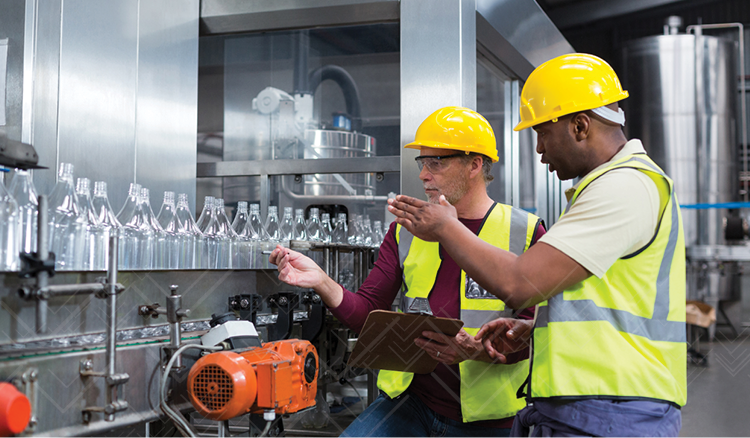Cycle Time: The KPI That Defines Production Speed and Efficiency
Cycle Time is one of the most fundamental production KPIs in manufacturing. It measures how long it takes to complete one full unit through a specific process — from the moment work begins to the moment the unit exits that process. Because it reflects true, real-world execution speed, Cycle Time is one of the strongest indicators of operational efficiency, flow stability, and capacity performance inside the plant.
When operations leaders understand, monitor, and improve Cycle Time, they gain the ability to increase throughput without adding equipment, shift structure, or capital cost — which makes this metric essential for scaling output efficiently.
What Is Cycle Time?
Cycle Time is the average time required to produce a single unit from start to completion within a defined step or process. This can be a machine cycle, an assembly workstation, a weld cell, or a packaging step.
The calculation for Cycle Time is:
Cycle Time = Total Production Time / Total Units ProducedCycle Time = Total Production Time / Total Units Produced
For example:
If a process cell runs for 7.5 hours and produces 540 completed units, Cycle Time is 50 seconds per unit. Cycle Time is used daily in advanced manufacturing environments to model capacity, align labor planning, calculate true takt feasibility, and benchmark performance between lines, shifts, or equipment assets.
Why Cycle Time Matters
Cycle Time drives:
- Throughput capability
A reduction in Cycle Time increases output capacity without needing additional assets.
- Cost efficiency
Lower Cycle Time reduces labor cost per unit and improves equipment utilization.
- Scheduling precision
Stable Cycle Time makes run time predictability significantly stronger.
- Continuous improvement prioritization
Cycle Time exposes leverage points — not just symptoms — in the process.
This is why Cycle Time is often the first metric reviewed when production falls behind schedule. It reveals whether output problems are driven by machines, labor, flow constraints, or upstream variation.
Factors That Increase Cycle Time
Cycle Time rarely increases due to a single failure point. Most Cycle Time degradation is cumulative — and caused by compounding small inefficiencies. Common drivers include:
- Core team members overloaded with too much task content
- Poor sequencing or staging of materials, tools, or fixtures
- Bottleneck stations not appropriately supported
- Excessive machine downtime or slow changeovers
- Staffing below true required run capacity
- Too much motion, reach, walk, repositioning between tasks
Cycle Time must be evaluated as a system property — not a momentary stopwatch measurement.
Best Practices to Reduce Cycle Time
- Conduct work content balancing analysis across the process
- Standardize workstation design and material presentation
- Proactively schedule preventive maintenance
- Break down Cycle Time by shift AND operator to identify variation
- Align labor to actual run capacity — not static headcount
Cycle Time improvement is often less about big capex and more about removing friction from the process.
How Veryable Helps Improve Cycle Time
Much of Cycle Time variation in the real world is driven by labor capacity misalignment.
If a process is understaffed — or the bottleneck station is starved or blocked — Cycle Time slows. Operators rush, skip steps, or cannot maintain pace. This is one of the major reasons Cycle Time spikes dramatically during seasonal surges, large customer orders, and short-run bursts.
Veryable’s on-demand labor model enables manufacturers to flex labor capacity in real time, ensuring each process is properly staffed with the right number of operators based on actual production load. This prevents overburden, protects standard work execution speed, and reduces unplanned Cycle Time drag.
Real-World Example: Reducing Cycle Time Through Labor Flexibility
A midwest light assembly plant ran a two-station assembly process where the second station continually became the constraint during high demand. This caused the upstream station to build WIP and stretched Cycle Time from 54 seconds/unit to nearly 70 seconds/unit during peak weeks.
By leveraging Veryable, the plant gained the ability to deploy additional trained operators only during high-volume periods — specifically positioned at the bottleneck station. Once labor capacity matched actual run pace, excess WIP disappeared and the line stabilized.
As a result, Cycle Time returned to 54 seconds per unit — and the plant increased weekly output by 12% — without modifying equipment or adding permanent labor.
Conclusion
Cycle Time is one of the most reliable and actionable production metrics in manufacturing because it reflects the speed and efficiency of real work being done. When Cycle Time is reduced in a controlled, sustainable way — output increases, cost per unit declines, and overall plant performance improves.
With the ability to flex labor based on real-time production demand, manufacturers using Veryable can maintain consistent process pacing, reduce variability, and protect Cycle Time performance even under volatile demand.
Ready to improve cycle times?
Click here to learn more about how Veryable can help you scale labor capacity dynamically, decrease cycle times, and maximize operational efficiency.
Previous Posts
Revolutionizing Manufacturing: How Veryable Is Reshaping Talent Acquisition and Retention
The Future of Manufacturing and Logistics
Create a free business profile today to explore our platform.






